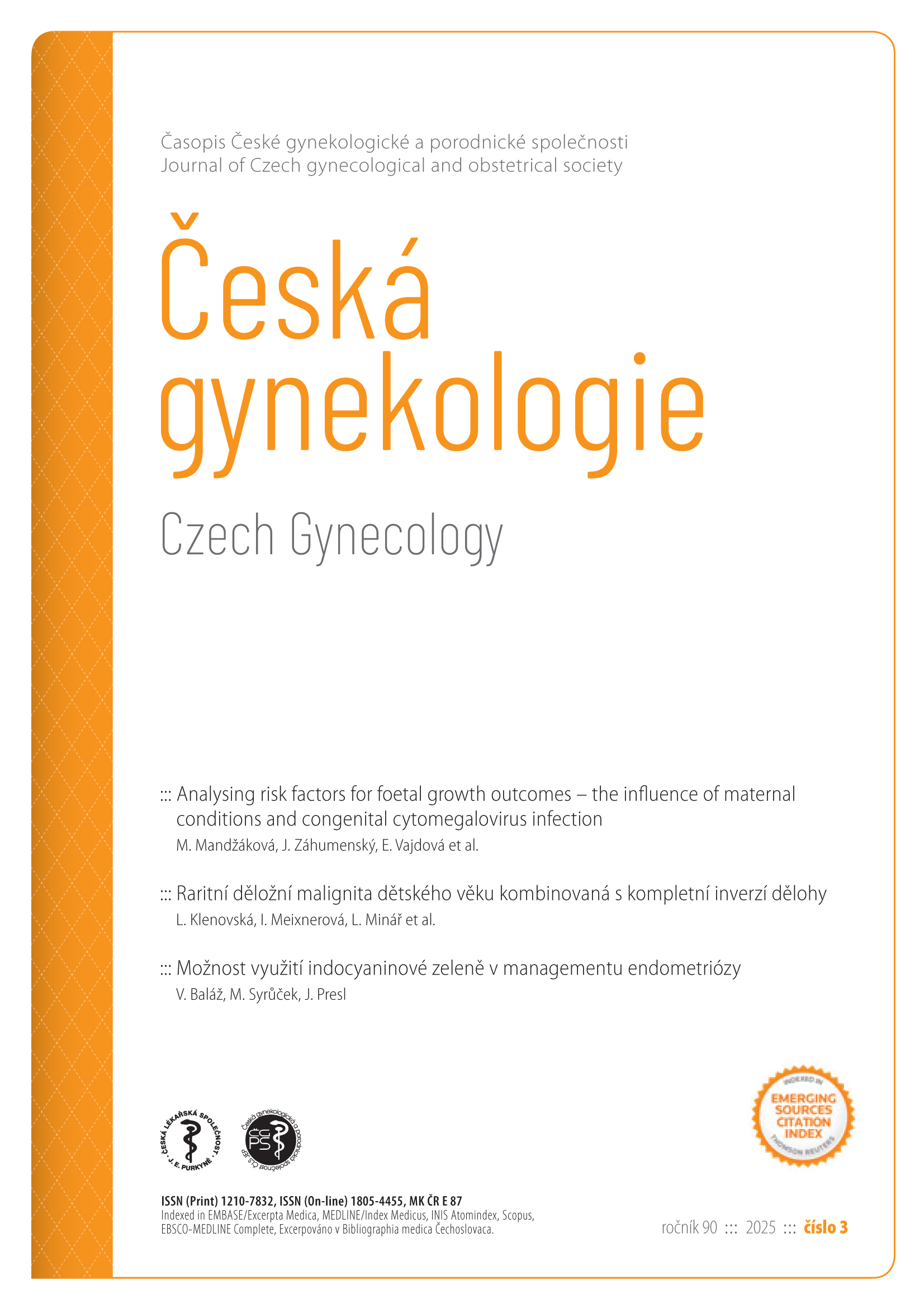Possible use of indocyanine green in the management of endometriosis
Keywords:
indocyanine green, tissue perfusion, guided resection, deep infiltrating endometriosisAbstract
Endometriosis affects approximately 10% of women of fertile age and its deep infiltrating form causes serious consequences for fertility, clinical problems depending on which organs are affected (urinary and digestive tract) and causes serious pain which seriously impairs quality of life. Resection of the affected tissue tend to be complex and often require multidisciplinary approach. Resection in the field of severe deep infiltrating endometriosis is complicated by the difficulty of resection line identification. Although we are able to perform most of the resections laparoscopically, there is still significant risk of intra and postoperative complications, the most serious of which is the formation of rectovaginal fistulas. Identification of boundaries of the endometrial nodule and preservation of tissue vitality is crucial in resection procedures. Endometriotic nodules, based on the pathogenesis of the lesion, have various vascularity and therefore different perfusion patterns. According to nature of tissue and the degree of vascularization, most deep infiltrating nodules have rather hypoperfusion pattern. A substance that would be able to guide the resection by live monitoring of the tissue perfusion, could have useful therapeutic applications. Such substance could be the fluorescent dye indocyanine green. With resection guidance by fluorescence dye, we could be able of pathogenesis oriented management of the disease and therefore perform more gentle tissue preparation, with less collateral damage, reduction of intra and postoperative complications, and thus improvement of the quality of life of patients in terms of pain, risk of recurrence, and preservation of fertility.


